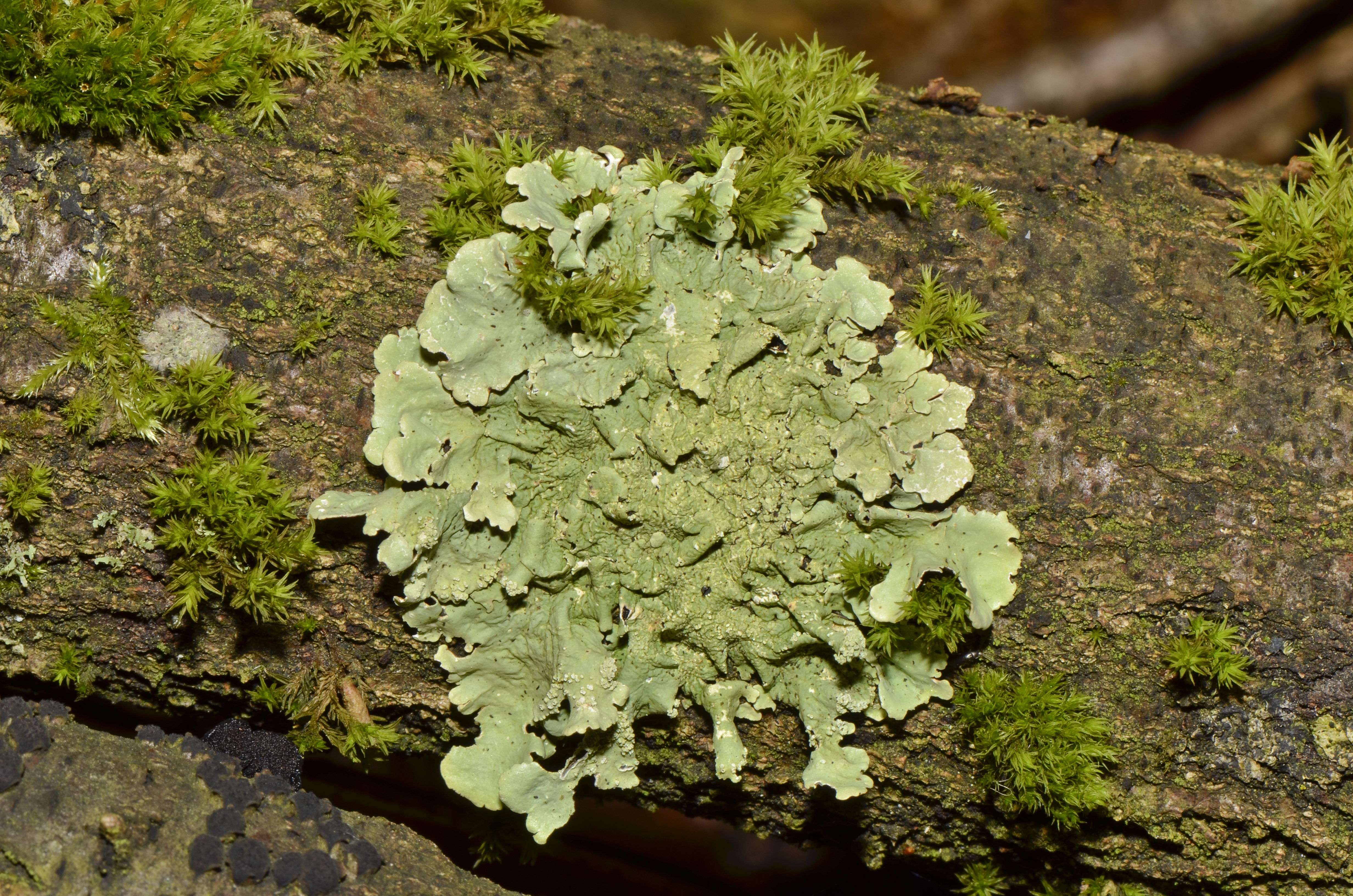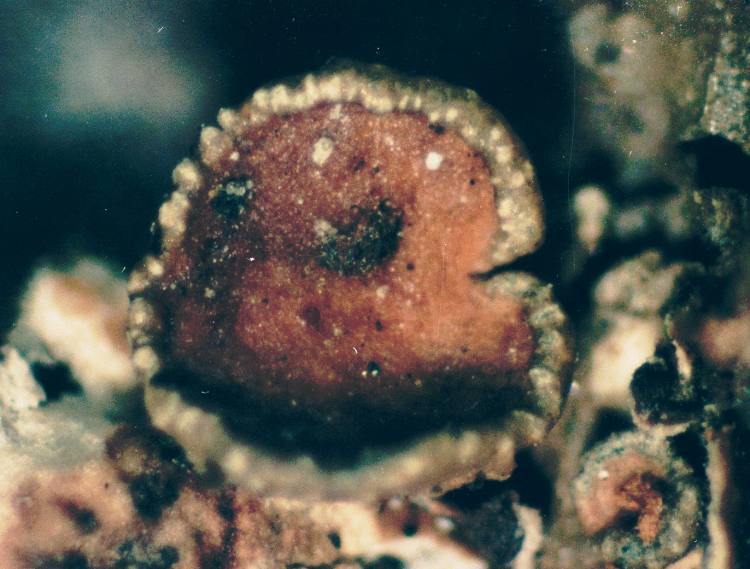|
Melanohalea Peruviana
''Melanohalea peruviana'' is a species of foliose lichen in the family Parmeliaceae. Found in Peru, it was described as a new species in 2012 by Ted Essingler. The type was collected by lichenologists Rolf Santesson and Roland Moberg in 1981, north of Huaraz in , at an elevation of . Although it has a superficial similarity to '' Melanohalea trabeculata'', it can be distinguished from that species by the presence of eight spores per ascus rather than 16–32, and by a more flattened and wrinkled thallus. Additionally, ''Melanohalea peruviana'' does not have detectable secondary compounds Secondary metabolites, also called specialised metabolites, toxins, secondary products, or natural products, are organic compounds produced by any lifeform, e.g. bacteria, fungi, animals, or plants, which are not directly involved in the norma ... in the medulla, whereas ''M. trabeculata'' typically has medullary norstictic acid. References peruviana Lichen species Lichen ... [...More Info...] [...Related Items...] OR: [Wikipedia] [Google] [Baidu] |
Foliose Lichen
Foliose lichen is one of the morphological classes of lichens, which are complex organisms that arise from the symbiotic relationship between fungi and a photosynthetic partner, typically algae. This partnership allows lichen to live in diverse climates that can range from cold, dry mountains to wet, warm valleys. Lichens develop quite slowly with recorded growth rates of 0.01–27mm/year depending on the species. Their lifespan averages between 30 and 60 years. Lichens have a main body part called the thallus, which is composed of hyphae, and houses the cortex and medulla. The cortex contains the photosynthetic cells while the medulla allows for gas exchange and makes up the bulk of the lichen's thallus. There are three main types of lichens: crustose, foliose, and fruticose. Foliose lichen are characterised by flattened leafy thalli, and an upper and lower cortex. Many have numerous layers, which are stratified, and aid in identifying different types. Foliose lichens attach to ... [...More Info...] [...Related Items...] OR: [Wikipedia] [Google] [Baidu] |
Thallus
Thallus (plural: thalli), from Latinized Greek (), meaning "a green shoot" or "twig", is the vegetative tissue of some organisms in diverse groups such as algae, fungi, some liverworts, lichens, and the Myxogastria. Many of these organisms were previously known as the thallophytes, a polyphyletic group of distantly related organisms. An organism or structure resembling a thallus is called thalloid, thallodal, thalliform, thalline, or thallose. A thallus usually names the entire body of a multicellular non-moving organism in which there is no organization of the tissues into organs. Even though thalli do not have organized and distinct parts (leaves, roots, and stems) as do the vascular plants, they may have analogous structures that resemble their vascular "equivalents". The analogous structures have similar function or macroscopic structure, but different microscopic structure; for example, no thallus has vascular tissue. In exceptional cases such as the Lemnoideae, where ... [...More Info...] [...Related Items...] OR: [Wikipedia] [Google] [Baidu] |
Lichens Described In 2012
A lichen ( , ) is a composite organism that arises from algae or cyanobacteria living among filaments of multiple fungi species in a mutualistic relationship.Introduction to Lichens – An Alliance between Kingdoms . University of California Museum of Paleontology. Lichens have properties different from those of their component organisms. They come in many colors, sizes, and forms and are sometimes plant-like, but are not s. They may have tiny, leafless branches (); flat leaf-like structures ( [...More Info...] [...Related Items...] OR: [Wikipedia] [Google] [Baidu] |
Lichen Species
A lichen ( , ) is a composite organism that arises from algae or cyanobacteria living among filaments of multiple fungi species in a mutualistic relationship.Introduction to Lichens – An Alliance between Kingdoms . University of California Museum of Paleontology. Lichens have properties different from those of their component organisms. They come in many colors, sizes, and forms and are sometimes plant-like, but are not s. They may have tiny, leafless branches (); flat leaf-like structures ( |
Melanohalea
''Melanohalea'' is a genus of foliose lichens in the family Parmeliaceae. It contains 30 mostly Northern Hemisphere species that grow on bark or on wood. The genus is characterized by the presence of pseudocyphellae, usually on warts or on the tips of isidia, a non-pored and a medulla containing depsidones or lacking secondary compounds. ''Melanohalea'' was circumscribed in 2004 as a segregate of the morphologically similar genus ''Melanelia''. Taxonomy ''Melanohalea'' was circumscribed in 2004 by lichenologists Oscar Blanco, Ana Crespo, Pradeep K. Divakar, Theodore Esslinger, David L. Hawksworth and H. Thorsten Lumbsch. It is a segregate of ''Melanelia'', a genus created in 1978 to contain the brown '' Parmelia'' species. The circumscription of this genus was questioned later, especially after early molecular phylogenetics studies demonstrated that it was not monophyletic. Subsequently, two genera, '' Melanelixia'' and ''Melanohalea'', were created. ''Melanohalea'' or ... [...More Info...] [...Related Items...] OR: [Wikipedia] [Google] [Baidu] |
Norstictic Acid
Norstictic acid is a depsidone produced as a secondary metabolites in lichen A lichen ( , ) is a composite organism that arises from algae or cyanobacteria living among filaments of multiple fungi species in a mutualistic relationship.Lactones Phenols Lichen products Heterocyclic compounds with 4 rings {{lichen-stub ... [...More Info...] [...Related Items...] OR: [Wikipedia] [Google] [Baidu] |
Medulla (lichenology)
The medulla is a horizontal layer within a lichen thallus. It is a loosely arranged layer of interlaced hyphae below the upper cortex and photobiont A lichen ( , ) is a composite organism that arises from algae or cyanobacteria living among filaments of multiple fungi species in a mutualistic relationship.Galloway, D.J. (1992). Flora of Australia - ''Lichen Glossary'' The medulla generally has a cottony appearance. It is the widest layer of a heteromerous lichen thallus. References Fungal morphology and anatomy Lichenology {{lichen-stub ...[...More Info...] [...Related Items...] OR: [Wikipedia] [Google] [Baidu] |
Secondary Metabolite
Secondary metabolites, also called specialised metabolites, toxins, secondary products, or natural products, are organic compounds produced by any lifeform, e.g. bacteria, fungi, animals, or plants, which are not directly involved in the normal growth, development, or reproduction of the organism. Instead, they generally mediate ecological interactions, which may produce a selective advantage for the organism by increasing its survivability or fecundity. Specific secondary metabolites are often restricted to a narrow set of species within a phylogenetic group. Secondary metabolites often play an important role in plant defense against herbivory and other interspecies defenses. Humans use secondary metabolites as medicines, flavourings, pigments, and recreational drugs. The term secondary metabolite was first coined by Albrecht Kossel, a 1910 Nobel Prize laureate for medicine and physiology in 1910. 30 years later a Polish botanist Friedrich Czapek described secondary metabolit ... [...More Info...] [...Related Items...] OR: [Wikipedia] [Google] [Baidu] |
Ascus
An ascus (; ) is the sexual spore-bearing cell produced in ascomycete fungi. Each ascus usually contains eight ascospores (or octad), produced by meiosis followed, in most species, by a mitotic cell division. However, asci in some genera or species can occur in numbers of one (e.g. ''Monosporascus cannonballus''), two, four, or multiples of four. In a few cases, the ascospores can bud off conidia that may fill the asci (e.g. ''Tympanis'') with hundreds of conidia, or the ascospores may fragment, e.g. some ''Cordyceps'', also filling the asci with smaller cells. Ascospores are nonmotile, usually single celled, but not infrequently may be coenocytic (lacking a septum), and in some cases coenocytic in multiple planes. Mitotic divisions within the developing spores populate each resulting cell in septate ascospores with nuclei. The term ocular chamber, or oculus, refers to the epiplasm (the portion of cytoplasm not used in ascospore formation) that is surrounded by the "bourrelet ... [...More Info...] [...Related Items...] OR: [Wikipedia] [Google] [Baidu] |
Parmeliaceae
The Parmeliaceae is a large and diverse family of Lecanoromycetes. With over 2700 species in 71 genera, it is the largest family of lichen-forming fungi. The most speciose genera in the family are the well-known groups: '' Xanthoparmelia'' ( 822 species), ''Usnea'' (355 species), ''Parmotrema'' ( 255 species), and ''Hypotrachyna'' (262 species). Nearly all members of the family have a symbiotic association with a green alga (most often ''Trebouxia'' spp., but '' Asterochloris'' spp. are known to associate with some species).Miadlikowska, J. ''et al.'' (2006). New insights into classification and evolution of the Lecanoromycetes (Pezizomycotina, Ascomycota) from phylogenetic analyses of three ribosomal RNA- and two protein-coding genes. ''Mycologia'' 98: 1088-1103. http://www.mycologia.org/cgi/reprint/98/6/1088.pdf The majority of Parmeliaceae species have a foliose, fruticose, or subfruticose growth form. The morphological diversity and complexity exhibited by this group is en ... [...More Info...] [...Related Items...] OR: [Wikipedia] [Google] [Baidu] |
Ascospore
An ascus (; ) is the sexual spore-bearing cell produced in ascomycete fungi. Each ascus usually contains eight ascospores (or octad), produced by meiosis followed, in most species, by a mitotic cell division. However, asci in some genera or species can occur in numbers of one (e.g. ''Monosporascus cannonballus''), two, four, or multiples of four. In a few cases, the ascospores can bud off conidia that may fill the asci (e.g. ''Tympanis'') with hundreds of conidia, or the ascospores may fragment, e.g. some ''Cordyceps'', also filling the asci with smaller cells. Ascospores are nonmotile, usually single celled, but not infrequently may be coenocytic (lacking a septum), and in some cases coenocytic in multiple planes. Mitotic divisions within the developing spores populate each resulting cell in septate ascospores with nuclei. The term ocular chamber, or oculus, refers to the epiplasm (the portion of cytoplasm not used in ascospore formation) that is surrounded by the "bourrelet ... [...More Info...] [...Related Items...] OR: [Wikipedia] [Google] [Baidu] |
Melanohalea Trabeculata
''Melanohalea trabeculata'' is a species of foliose lichen in the family Parmeliaceae. It was first formally described by Finnish lichenologist Teuvo Ahti in 1966 as ''Parmelia trabeculata''. Ted Esslinger transferred the species to the new genus ''Melanelia'' in 1978, which he circumscribed to contain the brown parmeliae species. In 2004, it was moved to the newly circumscribed genus ''Melanohalea''. Ahti collected the type in the Cochrane District of Ontario, Canada, on the west end of Martison Lake. There he found it growing on the trunk of a large willow tree on the lake shore. He suggested that it is a strictly North American species with a transcontinental boreal Boreal may refer to: Climatology and geography *Boreal (age), the first climatic phase of the Blytt-Sernander sequence of northern Europe, during the Holocene epoch *Boreal climate, a climate characterized by long winters and short, cool to mild ... range. References trabeculata Lichen species Lich ... [...More Info...] [...Related Items...] OR: [Wikipedia] [Google] [Baidu] |






